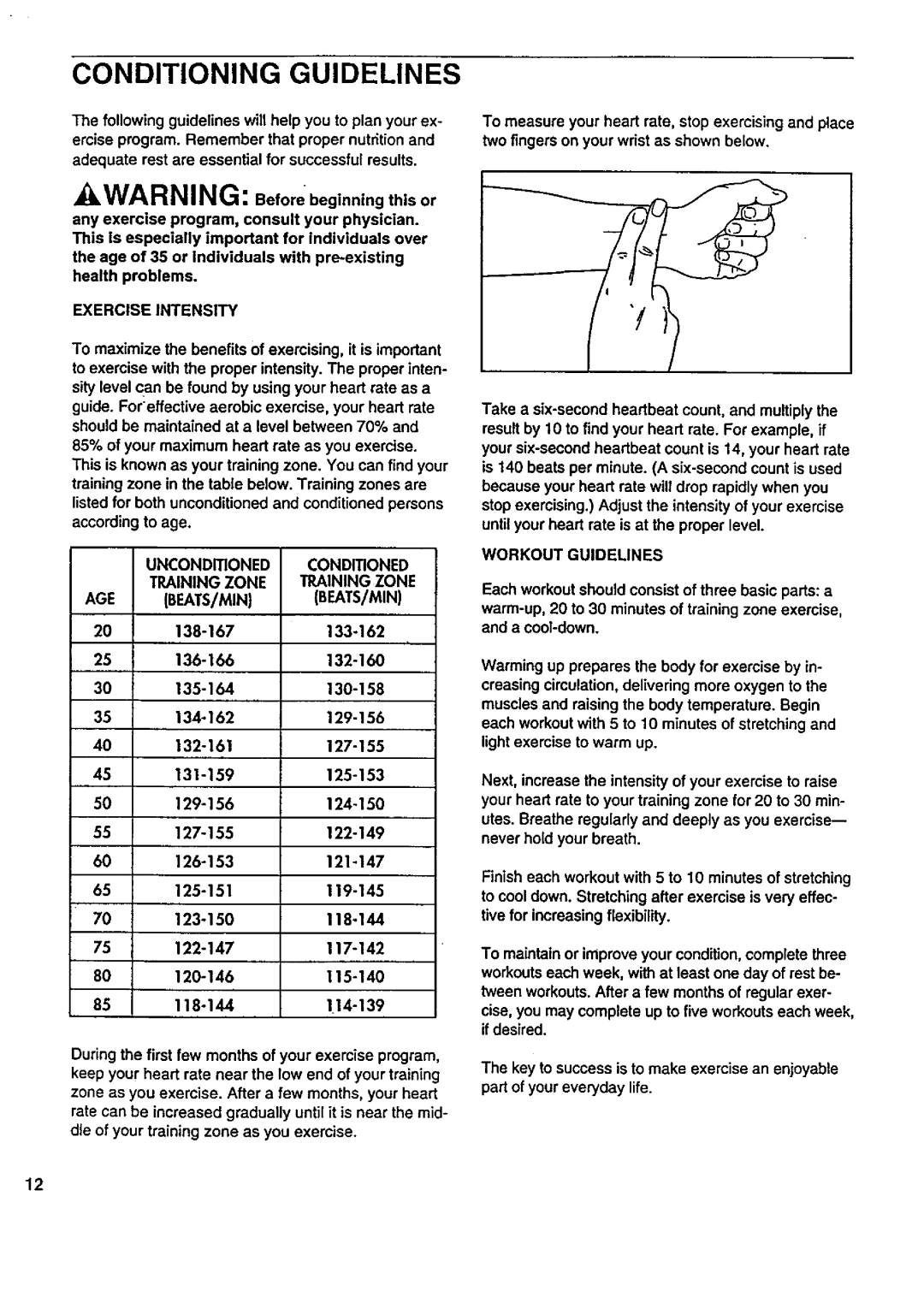
CONDITIONING GUIDELINES
The following guidelines will help you to plan your ex- ercise program. Remember that proper nutrition and adequate rest are essential for successful results.
WARNING: Before beginning this or any exercise program, consult your physician. This Is especially important for individuals over the age of 35 or Individuals with
EXERCISE INTENSITY
To maximize the benefits of exercising, it is important to exercise with the proper intensity. The proper inten- sity level can be found by using your heart rate as a guide. Foreffective aerobic exercise, your heart rate should be maintained at a level between 70% and 85% of your maximum heart rate as you exercise. This is known as your training zone. You can find your training zone in the table below. Training zones are listed for both unconditioned and conditioned persons according to age.
| UNCONDITIONED | CONDITIONED |
| TRAINING ZONE | TRAINING ZONE |
AGE | (BEATS/MIN) | (BEATS/MIN) |
20 | ||
25 | ||
30 | ||
35 | ||
40 | ||
45 | ||
50 | ||
55 | ||
60 | ||
65 | ||
70 | ||
75 | ||
80 | ||
85 |
During the first few months of your exercise program, keep your heart rate near the low end of your training zone as you exercise. After a few months, your heart rate can be increased gradually until it is near the mid- dle of your training zone as you exercise.
To measure your heart rate, stop exercising and place two fingers on your wrist as shown below.
Take a
WORKOUT GUIDELINES
Each workout should consist of three basic parts: a
Warming up prepares the body for exercise by in- creasing circulation, delivering more oxygen to the muscles and raising the body temperature. Begin each workout with 5 to 10 minutes of stretching and light exercise to warm up.
Next, increase the intensity of your exercise to raise your heart rate to your training zone for 20 to 30 min- utes. Breathe regularly and deeply as you
Finish each workout with 5 to 10 minutes of stretching to cool down. Stretching after exercise is very effec- tive for increasing flexibility.
To maintain or improve your condition, complete three workouts each week, with at least one day of rest be- tween workouts. After a few months of regular exer- cise, you may complete up to five workouts each week, if desired.
The key to success is to make exercise an enjoyable part of your everyday life.
12
